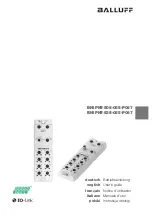
5
4
Critical information
1 Heating cable must not touch, crossover or overlap itself
at any point. (Please use strapping to avoid
bunching or crossover of cable). This could cause the cable to overheat.
2 Heating cable cannot be cut.
3 The
heating cable length cannot be altered in any circumstances. This may cause over heating resulting in
damage to the cable.
4 Take precautions to avoid damage to the heating cable during installation, due to dropping sharp objects
or stepping or careless pouring of concrete or banging the trowel on the heating cable while applying cement
mortar for tiling/flooring. In case of remodeling of floors, make sure that old mats/cables are removed before
you lay new heating cables.
5 Heating cables should be separated from other heat sources such as floor luminaries and chimneys.
6 Do not install the heating cable below -15 °C (5 °F) ambient temperature.
7 Minimum bending radius of the under cable while laying shall not be less than 1 inch (25 mm).
8 If Thermal Insulation Boards of adequate thickness is used, please ensure the item has typical R Value
of 0.027 or less.
9 The cold lead, normally 10 feet long, can be cut/extended to suit the location of the electrical power
connection box.
10 Floor thermostat sensor location shall be centered between two adjacent runs of heating cable.
Do not locate floor thermostat sensor closer than 1 inch to heating cable or allow to overlap any other
cable.
11 Maximum limit of the temperature setting on the thermostat should not exceed 30 °C (86 °F).
12 Check the main voltage and wattage of the heating cable as per the selection made. These are marked
on the label of the product.
13 Keep the power leads conduit separate from the sensor cable conduit.
14 It is highly recommended to connect the Cablecheck during the installation to warn about accidental damage
to the heating cable or lead wires.
15 Incase GFCI trips during normal operation, and cannot be reset, there is likely a fault in the cable. No attempt
should be made to re-energize the heating cable. GFCI must not be bypassed in any circumstances.
Consult a qualified individual.
16 Do not install the heating cable under permanent fixtures.
17 Allow sufficient drying or curing period of the sub floor and finished floor before and after installing the
heating cable.
18 Indicate which branch circuits supply the power to the heating cable and retain the UL labels for each heating
cable in a convenient location, i.e. taped to the circuit breaker box, for reference by the electrical inspector
or home owner. Leave one UL label attached to the heating cable. Attach warning label in convenient location
to show the room location where heating cable is installed.
19 Use only listed conduit, fittings, and or other components.
20 Heating cables shall not extend beyond the room or area in which they originate.
21 This heating cable shall be installed only by qualified individual who are familiar with the construction and
operation of the heating cable and the risks involved.
22 The installation of the heating cable shall be in accordance with the manufacturer’s instructions and local
national codes.
23 The manufacturer recommends using a separate cable for the shower area. The UL listing for this product does
not cover use in wet location in the United States.








































